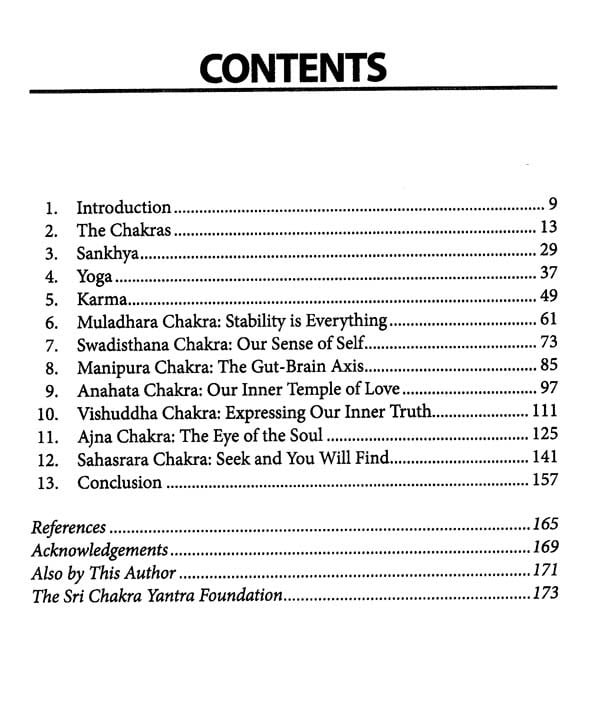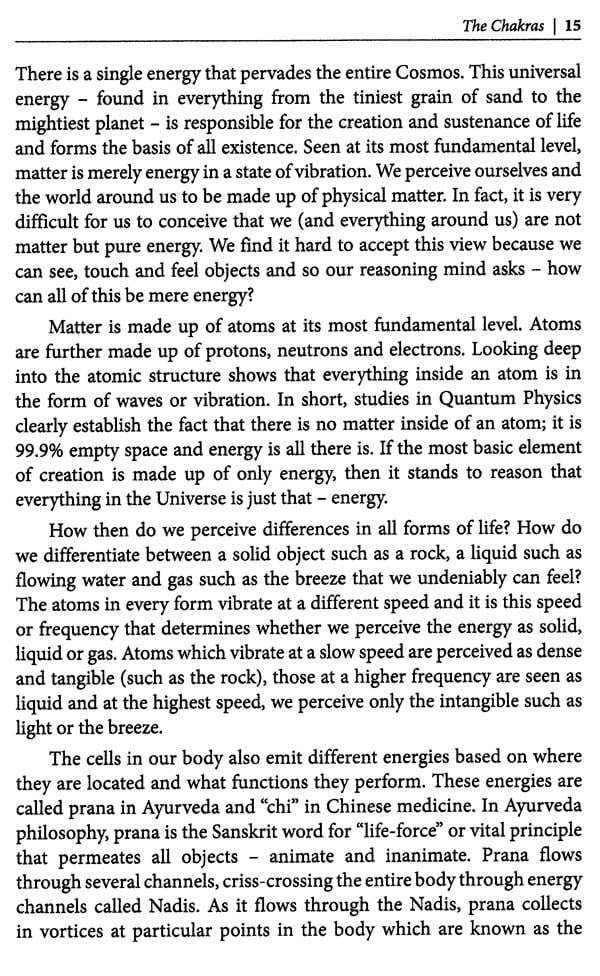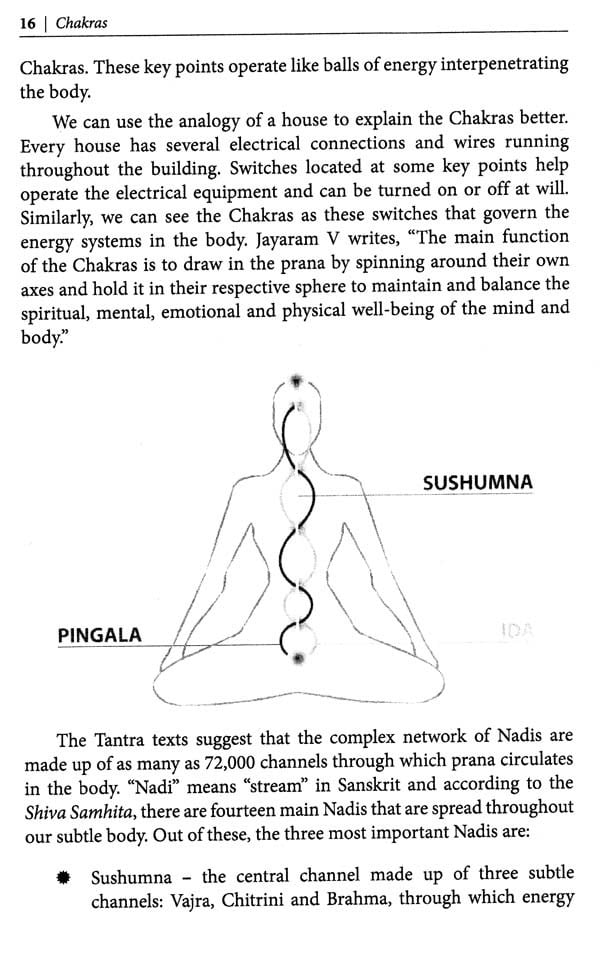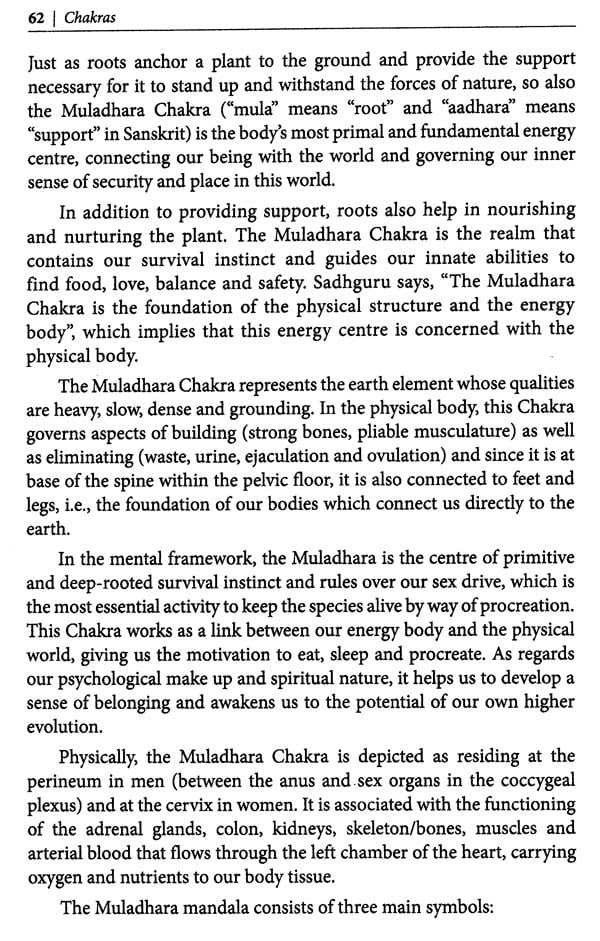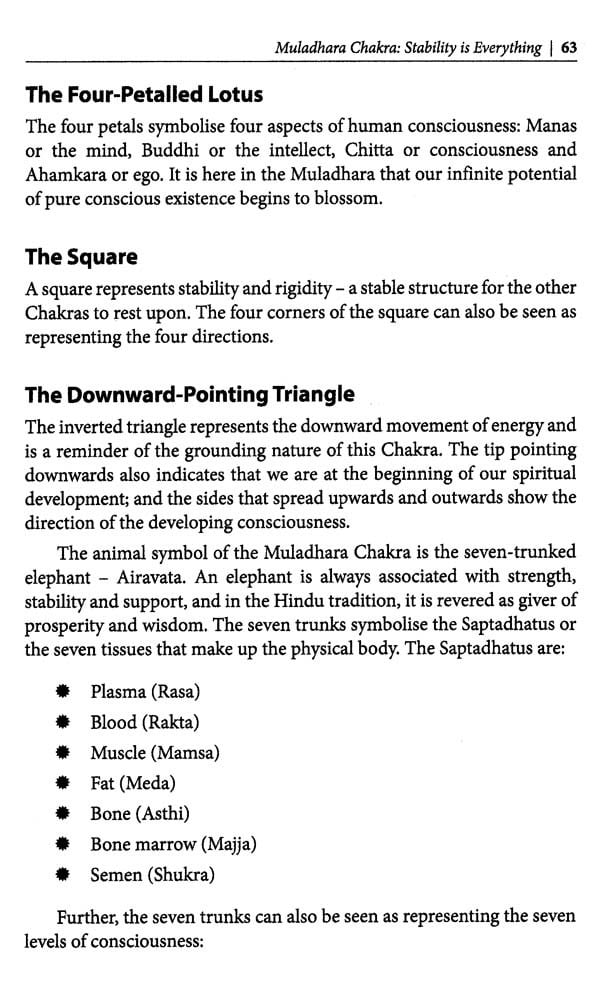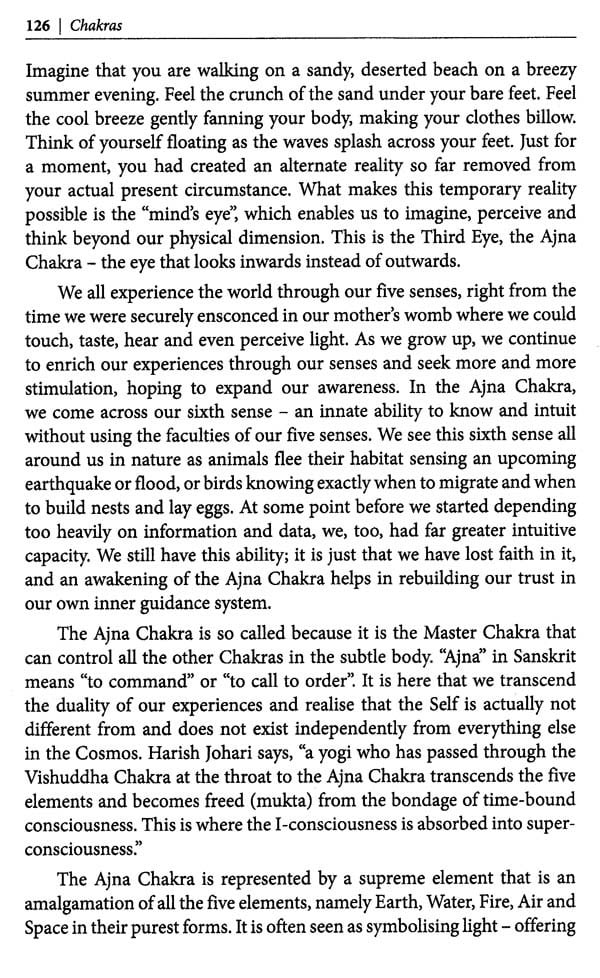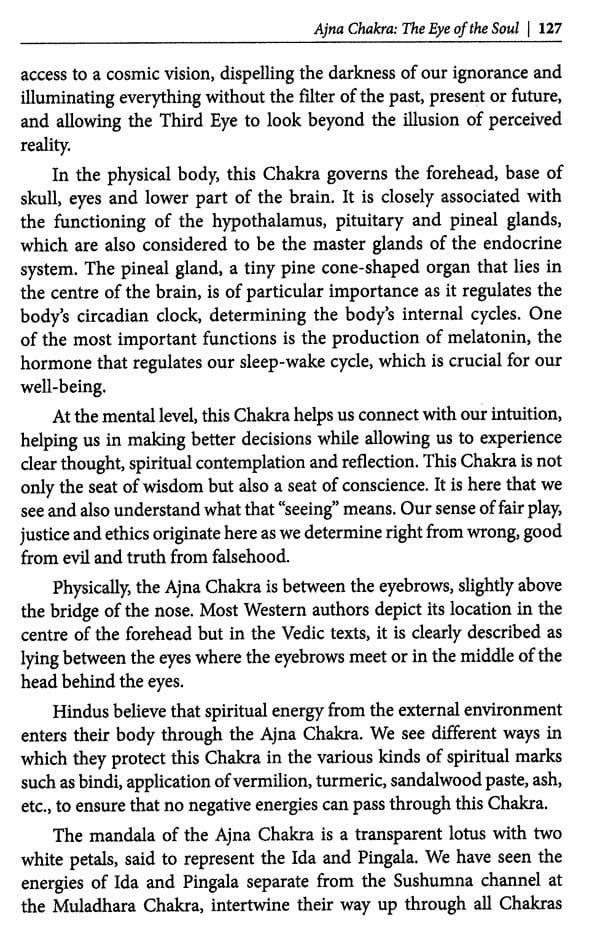
Chakras
Book Specification
| Item Code: | NAZ969 |
| Author: | Vinita Rashinkar |
| Publisher: | Notion Press |
| Language: | ENGLISH |
| Edition: | 2020 |
| ISBN: | 9781649516350 |
| Pages: | 174 |
| Cover: | PAPERBACK |
| Other Details | 9.00 X 6.00 inch |
| Weight | 200 gm |
Book Description
The quest for wellness is universal and has always featured prominently in human history. To move ahead in this journey, learn all about the mystical energy centers that are integral to the ancient Indian traditions of Yoga and Ayurveda. The Chakras are inner portals of harmony, linking the physical and spiritual planes, thus offering a deep and time-tested formula for transformation, abundance and the ability to hack into one’s own power of manifestation.
Using simple and everyday language, this book equips you with the ability to harness the potential of the tremendous internal energy pools that lie dormant in the body, and helps you to channelize it and act upon your life purpose by presenting Chakras as a tool for self-development. The book delves into concepts such as Sankhya, Yoga philosophies and the Karma doctrine in order to establish the context of how the Chakra energies work. It outlines the various aspects (such as sound, colour, mandala, body parts, related ailments and dysfunctions) associated with each of the seven chakras while recommending time-tested remedies to bring each chakra into a state of balance and harmony.
Compatible with any spiritual path, the holistic perspective helps create a richer and more fulfilling life, from overcoming everyday challenges to taking charge of one’s wellbeing, expressing one’s true self and navigating life’s journey towards full-spectrum living.
This is the second book by the author in the Spirituality Series. The first book, which was very well received by readers and critics alike, was about the esoteric Sri Chakra Yantra.
Vinita Rashinkar is a health and wellness expert, writer, speaker, spiritual counsellor and healer. She derives satisfaction from helping people find happiness and in aiding them lead a healthy and meaningful life. She has studied the principles of Ayurveda, yoga, meditation, chanting, chakras and stress management under various masters for the past 20 years. She has a Master's degree in English Literature.
Vinita is the Founder and Managing Director of Amara Vedic Wellness GmbH, a Dusseldorf-based company which aims at bringing hidden aspects of Vedic knowledge to the common man. Vinita has been a regular contributor to popular publications and portals, writing on subjects of health and lifestyle. She is also the Founder-Director of Bluebrick PR, a specialized international tourism marketing company.
She is presently working on her third book based on the Brihadaranyaka Upanishad.
Vinita has been featured in various Indian and international publications such as Femina, Outlook, Asiaspa, Finest Finance and Vogue. She is currently working with a major TV channel to provide health and wellness content.
At this very moment, the last sliver of the waning crescent moon is visible in the night sky, but not for long. Soon it will turn into a new moon for a brief time, carrying in its darkness the pangs of a new beginning, an instinct for birthing. It is a seed that will grow with the waxing moon getting larger every night, culminating in a spectacular orb of the most potent Full Moon, bringing a powerful energy of momentum and manifestation. Then it begins to wane slowly again, thus repeating the cycle. The earth and other heavenly bodies spin on their own axis while also moving around the solar system in their own set of rhythms and patterns. Every atom that exists in the Cosmos is forever moving as the electrons spin around in their own orbit, nothing ever resting. We are all infinitely connected to this eternal wheel that is constantly playing out in all of life. As is above, so it is below. We, too, hold within our own beings the wheels of spinning Universal energy, the vortexes of life - the Chakras.
The word "Chakra" in Sanskrit refers to a spinning disk, wheel or a vortex. The concept of Chakras is central to yoga and Ayurveda. Chakras were first described in the Vedas, especially in the Yoga Upanishads about four thousand years ago, and one of the most important texts on the subject is the Shat Chakra Nirupana by Purnananda Swami. Early Sanskrit texts speak of them both as meditative visualisations combining flowers and mantras and as physical entities in the body. In Tantra, Chakras are envisioned as continually present, highly relevant, a means to psychic and emotional energy; they play an important role in Shaktism along with the concepts of yantras, mandalas and Kundalini yoga in its practice.
The concept of Chakras gained immense popularity in the West when Sir John Woodroffe (also known as Arthur Avalon) translated the Shat Chakra Nirupana and the Padaka Panchaka into English in the early 20th century in a book titled The Serpent Power. This detailed and complex work formed the basis of C.W. Leadbeater's controversial book The Chakras, which is largely responsible for the presently held predominant Western view of the Chakras.
My interpretation of the Chakras is closely linked to my interest in Shaktism and Tantra, and I have attempted to assimilate the various versions of the Chakras without excluding the Western perspective. I do not find a reason to disagree with the prevailing Western views because they clearly have their roots in the Shakti Tantra school. I have omitted the mention of deities that reside in each Chakra because I feel they obscure the core study of the subject by bringing in a mythological and religious element. I have also avoided mention of the ruling planet, associated gem stone and other references which I felt were not relevant to the understanding of the concept of Chakras. That apart, I have remained faithful to the ancient Indian Tantra texts while also drawing from Western additions such as ascribing specific states of minds, specific colours and other such elements which I think actually help in understanding the nature of the energy specific to its location in the body.
Virtually all human cultures have some kind of concept of mind, spirit and soul as distinct from the physical body. While it is a common notion to associate the Chakras with the Indian traditions, in reality all cultures and religions have their own interpretations on similar lines of energy systems in the body. References can be found in ancient Egyptian, Chinese and Japanese philosophies while the Kabbala, Celtic and Sufi traditions also contain information about bodily energies. Renee Skuban writes, "The Chakras, when viewed collectively, reflect unified consciousness, or soul. When viewed individually, they reflect different aspects of consciousness, including body, instinct, vital energy, emotions, communication and connection to the Divine."
In order to fully understand the working of the Chakras, it is necessary to first gain some knowledge about the Sankhya philosophy which enumerates the nature of creation and how the five elements came into being. A study of the Sankhya philosophy will explain the nature of the association of the first five Chakras with an element, a sensory organ and an organ of action. Each of the five elements have their own Bija Mantra, which then becomes the sound energy necessary to activate the specific Chakra.
It is also crucial to gain some understanding of what Yoga really means because most people understand Yoga as `Asana", which, while being one of the eight limbs, is merely a preparatory method for the deeper practice of meditation. Yoga is a deep philosophy that outlines a prescription for a way of life that is conducive to good health, well-being and spiritual evolution. Yoga is deeply connected with balancing the flow of prana, directing it inwards to the Chakras and then upward to the Sahasrara.
Since we are told by Vedic seers that the state of our Chakras depends on our vasanas, Karma and samskaras, we will need to understand the theory of Karma as well. We, therefore, begin the book with dedicated chapters on Sankhya, Yoga philosophy and Karma, and then proceed to examine each of the seven Chakras in detail along with their symbolism, physical and mental manifestations, identification of potential blocks and the actions, including a detailed meditation guide that can help bring out a better understanding of the Chakra system.
**Contents and Sample Pages**
